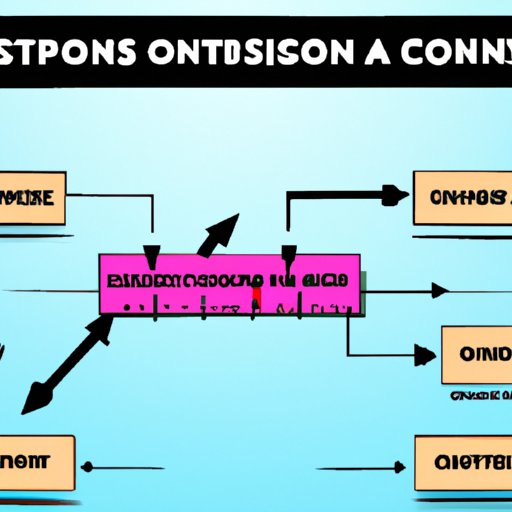Introduction
A cortisone shot is an injection of a steroid medication directly into a joint or other area of the body that is inflamed or in pain. The goal of a cortisone shot is to reduce inflammation and thereby reduce pain. While cortisone shots can provide relief for many people, it is important to understand the potential risks and benefits before deciding if a cortisone shot is right for you.
This article will explore the potential benefits, risks, and frequency of cortisone shots. It will provide an overview of what cortisone shots are, when they are beneficial, potential side effects, and how to develop a plan for receiving them.
Benefits of Cortisone Shots: How Often Should You Get One?
Cortisone shots are used to treat a variety of conditions, including arthritis, tendonitis, bursitis, and carpal tunnel syndrome. The main benefit of a cortisone shot is that it can provide almost immediate relief from inflammation and pain.
According to the American Academy of Orthopedic Surgeons, “Cortisone injections can provide significant relief from pain and inflammation caused by certain musculoskeletal disorders.” They can also help decrease swelling, enhance movement, and improve overall quality of life.
When it comes to determining how often you should get a cortisone shot, this depends on the individual and the condition being treated. Generally, it is recommended to limit cortisone shots to three or four times per year.
What Are the Risks and Benefits of Getting a Cortisone Shot?
It is important to consider both the benefits and risks associated with cortisone shots. While most people experience some degree of relief from their symptoms, there are potential side effects to be aware of. These include temporary discomfort at the injection site, lightheadedness, nausea, and increased blood sugar levels.
In addition, there is a risk of infection at the injection site, as well as the potential for tissue damage due to the powerful action of the steroid medication. In rare cases, cortisone shots can cause an allergic reaction, so it is important to discuss any allergies you may have with your doctor before getting a cortisone shot.

Understanding the Frequency of Cortisone Shots: What You Need to Know
The frequency of cortisone shots is determined by a number of factors, including the severity of your condition and the type of medication used. Your doctor will consider these factors when determining the best course of treatment for you.
In general, cortisone shots are not recommended for more than three or four times a year. This is because repeated use of cortisone shots can weaken tendons and ligaments, and can also lead to joint damage over time. Additionally, long-term use of cortisone shots can increase the risk of developing osteoporosis.
When is it Appropriate to Receive a Cortisone Shot?
When considering whether a cortisone shot is appropriate for you, it is important to speak with your doctor about your medical history and current condition. Your doctor will be able to assess your individual needs and determine if a cortisone shot is the best option for you.
In some cases, your doctor may suggest alternative treatments, such as physical therapy, rest, ice, or anti-inflammatory medications. These treatments may be more appropriate for some individuals and can offer more long-term relief from symptoms.
Creating a Plan for Receiving Cortisone Shots: Is There an Optimal Timing?
If your doctor determines that a cortisone shot is the best course of treatment for you, it is important to create a plan for receiving them. This plan should include the number of cortisone shots you will receive, the amount of time between each shot, and the length of time you will be receiving them.
Your doctor may also recommend an optimal timing for receiving cortisone shots. For example, if you are receiving them to treat an acute injury, your doctor may recommend that you receive the shots within a certain time frame in order to maximize the benefits.
How to Balance the Pros and Cons of Cortisone Shots: Finding the Right Frequency for You
Before receiving a cortisone shot, it is important to weigh the pros and cons of the treatment. While cortisone shots can provide immediate relief from pain and inflammation, they can also have potential side effects and risks. Additionally, repeated use of cortisone shots can lead to weakened tendons and ligaments, and can even cause joint damage over time.
It is important to find the right balance between the potential benefits and risks of cortisone shots. Your doctor can help you determine the best course of treatment for your specific condition, and help you find the right frequency for receiving cortisone shots.
Conclusion
Cortisone shots can provide significant relief from pain and inflammation caused by certain musculoskeletal disorders. However, it is important to consider the potential risks and benefits before deciding if a cortisone shot is right for you. Generally, it is recommended to limit cortisone shots to three or four times per year.
By speaking with your doctor and weighing the potential pros and cons, you can develop a plan for receiving cortisone shots that is tailored to your individual needs. By understanding the risks and benefits associated with cortisone shots, you can make an informed decision about your treatment options.
(Note: Is this article not meeting your expectations? Do you have knowledge or insights to share? Unlock new opportunities and expand your reach by joining our authors team. Click Registration to join us and share your expertise with our readers.)
